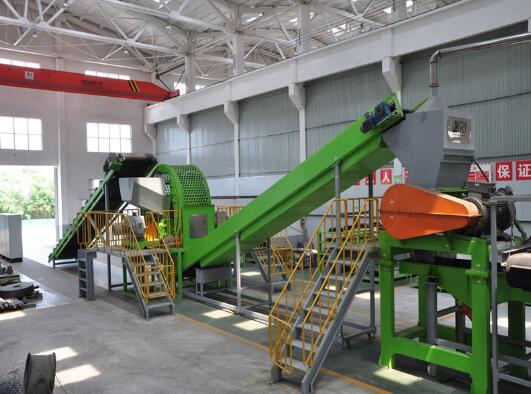Tire recycling is an important process for reducing waste and promoting sustainability. As the number of discarded tires grows each year, selecting the right tire recycling machine becomes crucial for businesses involved in tire processing. The right machine not only increases efficiency but also ensures quality output and long-term profitability. This article will guide you through the essential factors to consider when choosing a tire recycling machine.

The first step in choosing a tire recycling machine is determining the volume of tires you plan to process. Production capacity is a critical factor because it directly affects the size, power, and design of the machine. Some machines are designed for small-scale operations, processing a few hundred tires per day, while others are built for large-scale recycling plants that can handle thousands of tires daily.
If you anticipate growing your recycling business, it may be wise to invest in a machine with a higher production capacity than your current needs. Over time, this will save costs on equipment upgrades and reduce downtime during production.
Not all tire recycling machines are suitable for every type of tire. Before making a purchase, consider the types of tires you will be processing—whether they are passenger car tires, truck tires, or even off-the-road (OTR) tires. Machines designed for standard car tires may not be able to handle larger truck or industrial tires, which may require specialized equipment.
Make sure the machine you choose is capable of efficiently processing the tire sizes and types you'll be handling. This will help you avoid operational issues and ensure a smooth recycling process.
Tire recycling involves several stages, including shredding, grinding, and separating. When choosing a machine, it's essential to understand the specific processes involved and the desired output for your operation.
Shredding
Most tire recycling machines start with shredding the tires into smaller pieces. The size of the shred can vary depending on the machine and the needs of the business. Some machines allow for adjustable shred sizes, which can be useful if your operation requires flexibility.
Grinding and Granulating
After shredding, the tire material is ground into smaller particles or granules. The granulation process breaks down the rubber into finer pieces, which can be used for various applications like rubber mulch, playground surfaces, or asphalt additives. Be sure to select a machine with grinding capabilities that meet your desired output size and quality.
Separating
A key step in the recycling process is separating the rubber from other materials in the tire, such as steel and fibers. Some machines come with built-in separation systems that effectively extract and separate these materials. If you need high levels of purity in your recycled rubber, look for machines with efficient separation technology.
Power consumption is another important factor when selecting a tire recycling machine. Larger machines with high production capacities may consume more energy, leading to higher operational costs. It's essential to balance the machine's power requirements with your budget and energy availability.
In addition to energy usage, factor in the cost of maintenance, spare parts, and labor. Some machines require regular maintenance to remain efficient, while others are designed with low-maintenance components. Choosing a machine with reasonable maintenance and operational costs will help maximize your return on investment.
Automation is becoming increasingly important in tire recycling operations, as it helps increase efficiency and reduce labor costs. When evaluating a tire recycling machine, consider its automation features. Machines with programmable controls, automatic feeding systems, and real-time monitoring can significantly reduce manual intervention, allowing your operation to run more smoothly.
Additionally, modern tire recycling machines often come with advanced control systems that allow for remote operation and diagnostics. These features help operators monitor machine performance, detect issues early, and reduce downtime.
Tire recycling machines operate under high pressure and temperatures, making safety a top priority. Ensure that the machine you choose includes essential safety features like emergency stop buttons, protective guards, and automatic shutdown systems in case of malfunction. Machines with proper safety certifications and features not only protect workers but also prevent costly accidents and equipment damage.
Choosing the right supplier is as important as choosing the right machine. A reliable supplier will provide detailed product information, offer technical support, and help with installation and training. It's important to work with a supplier who has a solid reputation for quality and customer service.
Before finalizing your decision, check reviews and references from other businesses that have purchased similar equipment. A trustworthy supplier will also provide warranties and after-sales support, ensuring that your investment is protected in the long term.
Selecting the right tire recycling machine is a crucial decision that impacts the efficiency and profitability of your tire recycling operation. By considering factors such as production capacity, the types of tires to be processed, energy consumption, automation features, and safety measures, you can make an informed choice. Additionally, working with a reliable supplier will ensure you receive the support you need throughout the machine's lifespan.
If you're in the market for a tire recycling machine or need expert advice, feel free to contact us. We are a trusted supplier of tire recycling equipment, ready to assist you in finding the perfect solution for your recycling needs.
Previous: All-weather Road Sweeper: HS-1200
Next: Rubber Disc Roller: Enhancing Performance in Precision Applications
Copyright:@2020-2021
Comments Please sign in or sign up to post.
0
0 of 500 characters used